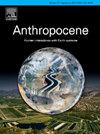物种入侵及养分动态对湖泊生态系统有机碳埋藏的影响
IF 3.9
2区 地球科学
Q2 ENVIRONMENTAL SCIENCES
引用次数: 0
摘要
20世纪70年代末以来,太湖新salanx (nesalanx taihuensis, Nt)入侵云南高原湖泊,深刻地改变了生物地球化学循环,破坏了生态平衡。虽然气候变率影响本地物种的恢复力,但入侵物种对这些空间异质性湖泊碳埋藏的影响仍然缺乏量化。结合二元模型和结构方程模型(SEM),探讨物种入侵和湖泊营养动态驱动碳埋藏的机制。结果表明,云南高原湖泊的有机碳累积速率(OCAR)在3.74 g·m−2·yr−1 ~ 148.23 g·m−2·yr−1之间,其中4个湖泊的OCAR在过去60年中增加了两倍以上。稳定同位素和碳氮比证实了入侵后由外来有机质为主向内源有机质为主的转变。值得注意的是,Nt对OCAR的直接影响(通径系数0.273,p <; 0.001)比气候更强,这是由养分释放和浮游状态转变介导的。同时,入侵物种通过入侵-富营养化反馈放大有机碳埋藏(OCB)。这些发现强调了湖泊水文、流域气候和营养水平如何直接调节OCAR,并通过Nt生物量间接调节OCAR。此外,入侵物种充当生物地球化学工程师,通过生物强迫重塑碳汇动态。本研究为评估高原湖泊脆弱生态系统的气候入侵协同效应建立了预测框架,为生态系统管理和保护提供了重要见解。本文章由计算机程序翻译,如有差异,请以英文原文为准。
The impact of species invasion and nutrient dynamics on organic carbon burial in lake ecosystems
The invasion of Neosalanx taihuensis (Nt) into Yunnan Plateau lakes since the late 1970s has profoundly altered biogeochemical cycles and disrupted ecological equilibrium. While climate variability influences native species resilience, the impact of invasive species on carbon burial in these spatially heterogeneous lakes remains poorly quantified. We combine binary and structural equation modeling (SEM) to explore the mechanisms by which species invasion and lake nutrient dynamics drive carbon burial. Results indicate that organic carbon accumulation rates (OCAR) in Yunnan Plateau lakes range from 3.74 g·m−2·yr−1 to 148.23 g·m−2·yr−1, with more than tripled in four lakes over the past 60 years. Stable isotopes and C/N ratio confirm a post-invasion shift from allochthonous to endogenous organic matter dominance. Notably, Nt exerts a stronger direct effect on OCAR (path coefficient 0.273, p < 0.001) than climate, mediated by nutrient release and planktonic regime shifts. Meanwhile, invasive species amplify organic carbon burial (OCB) via the invasion-eutrophication feedback. These findings highlight how lake hydrology, basin climate and nutrient level directly regulate OCAR while indirectly modulate it through Nt biomass. Furthermore, invasive species act as biogeochemical engineers, reshaping carbon sink dynamics through biotic forcing. This study establishes a predictive framework for assessing climate-invasion synergies in vulnerable plateau lake ecosystems, offering key insights for ecosystem management and conservation.
求助全文
通过发布文献求助,成功后即可免费获取论文全文。
去求助
来源期刊

Anthropocene
Earth and Planetary Sciences-Earth and Planetary Sciences (miscellaneous)
CiteScore
6.30
自引率
0.00%
发文量
27
审稿时长
102 days
期刊介绍:
Anthropocene is an interdisciplinary journal that publishes peer-reviewed works addressing the nature, scale, and extent of interactions that people have with Earth processes and systems. The scope of the journal includes the significance of human activities in altering Earth’s landscapes, oceans, the atmosphere, cryosphere, and ecosystems over a range of time and space scales - from global phenomena over geologic eras to single isolated events - including the linkages, couplings, and feedbacks among physical, chemical, and biological components of Earth systems. The journal also addresses how such alterations can have profound effects on, and implications for, human society. As the scale and pace of human interactions with Earth systems have intensified in recent decades, understanding human-induced alterations in the past and present is critical to our ability to anticipate, mitigate, and adapt to changes in the future. The journal aims to provide a venue to focus research findings, discussions, and debates toward advancing predictive understanding of human interactions with Earth systems - one of the grand challenges of our time.
 求助内容:
求助内容: 应助结果提醒方式:
应助结果提醒方式:


